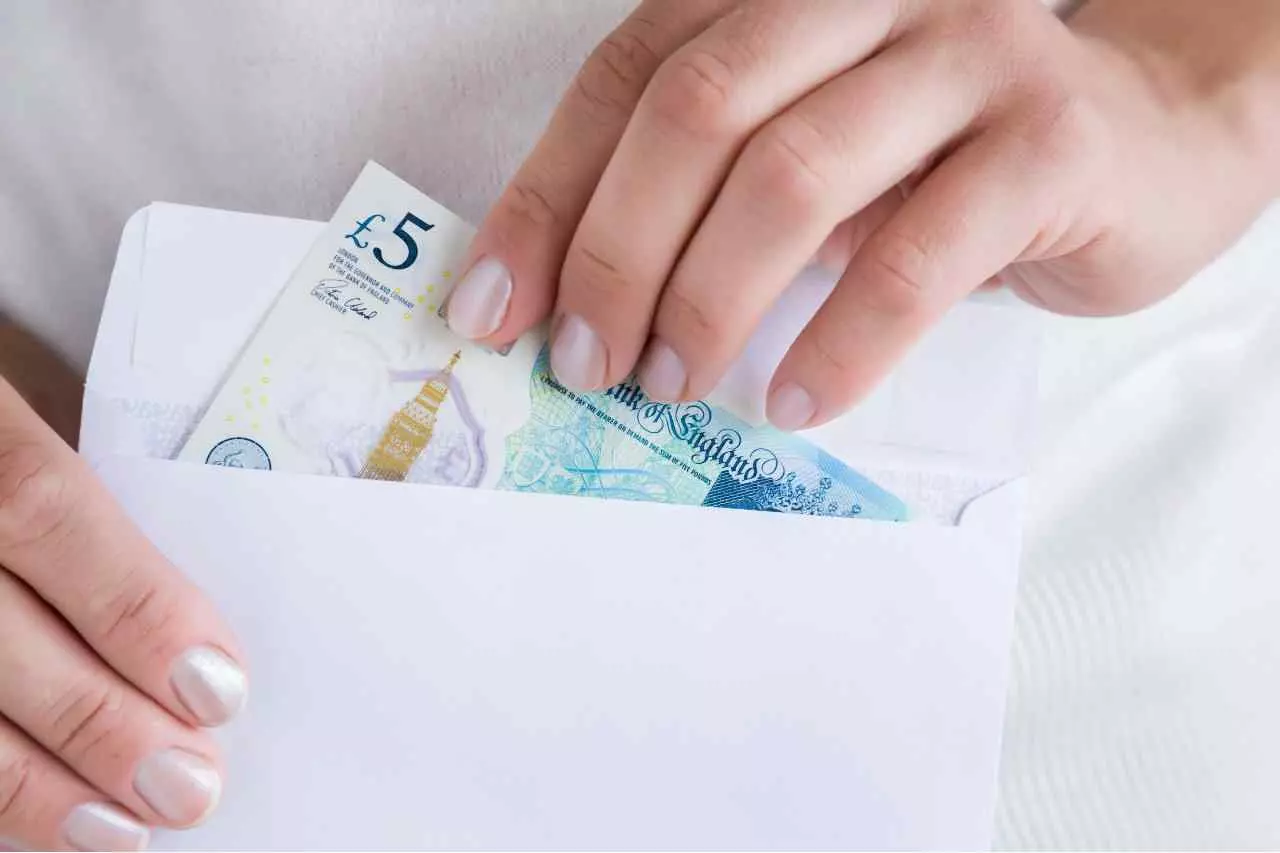Save money, live better. These are four simple words that describe a way of living that involves saving money by cutting out needless expenses without compromising your life too much. In fact, by having money left over at the end of the month, you can start achieving your financial goals, like holidays, a car, or a down payment for a mortgage.
Many people think that saving money and living better can only be achieved by getting a better-paying job. While that should result in having money leftover come payday, you’ll probably run into the same problems if you have bad financial habits. Only this time, it will be on a bigger scale.
You can start living a financially secure lifestyle by prioritising what’s important, setting some goals, and learning how to budget. You might think that being financially responsible means living a dull, buttoned-down life. However, that needn’t be the case.
By following our top money-saving tips, you can get your finances under control.
Benefits of Saving Money

If you’re someone who finds themselves regularly needing an online payday loan to get you through the month, you’ll need to know how to save money. The best way to adopt a save money live a better lifestyle is by understanding the benefits of saving money.
An Emergency Fund
Life is full of little surprises. Not all of them are pleasant. It could be an injury, illness, sudden job loss, or car or home repair. Whatever it might be, at some stage, most of us find ourselves in a situation where we need a lump sum.
To save yourself from applying for an emergency payday loan, you can put aside some money for a rainy day. If you follow our tips on saving money, you can put away around six months of expenses that will provide a buffer against job loss or other adverse situations.
Retirement
Retirement is one of the best reasons to save. No one wants to work into their 70s when you should be relaxing.
Down payment
It’s many people’s dream to own their own home. But even if you make an excellent monthly wage, you’ll need a down payment to get the best financing deals or qualify for a mortgage.
Big Purchases
One of the things that can help motivate you to go to work on a cold winter morning is the promise of reaching a goal or a big purchase. Unfortunately, nice cars or dream vacations don’t come cheap. To avoid paying off a high-interest loan, saving money for these purchases is a wise move.
Peace of Mind
Money is something that most people worry about. It’s also one of the leading reasons for divorce. Saving money means you know you can survive many of the problems that life throws at you or your relationship.
How to Get Started

If you’re the type of person who frequently relies on emergency loans to survive, you’ll be eager to find some easy ways to save money.
Here is our basic guide to getting started with a “save money and live a better” lifestyle.
Assess Your Finances
If you want to improve your financial standing, one of the first money-saving tips you should follow is to assess your finances. Your budget will not work unless you have an accurate reading of where you are at.
So, gather up all your statements and financial information. You’ll need to know your:
- Net Worth
- Debts (student loans, credit card debt, car loans, etc.)
- Retirement Plan
- Credit Score
- Savings
- Investments
Armed with a clear picture of your finances, you can now create a budget.
Create a Budget
A budget is essential for anyone wondering how to save money. Here are five crucial steps towards creating a budget.
Calculate Your Income
The first thing you’ll need to do is figure out how much money you have coming in per month. So, note down the amount after tax. If your earnings aren’t fixed, you can take an average. Try to determine your earnings as accurately as possible, and include anything like rental income, child support, dividends, and interest.
Determine Your Expenses
The next step is to calculate your outgoing cash flow. Break them down into categories, like:
- Housing (rent or mortgage)
- Transport
- Utilities (gas, electric, water, council tax)
- Food (not including restaurants)
- Discretionary spending (TV, phone bill, takeaway, nights out)
- Loan payments (student loans, car loans, or any quick payday loan or small business loan you might have taken out)
- Childcare, child support
- Insurance
Calculate the Difference

Once you’ve determined your income and your expenses, calculate the difference.
If the difference is positive, you’re in a good position. However, you can still use our money-saving tips to grow your wealth and achieve financial goals.
On the other hand, if the balance is negative, you need to act now. Essentially, you have two choices:
- earn more money
- cut your spending
It’s not always easy to just earn more money. Sometimes the opportunities aren’t there, or your circumstances won’t allow it. However, our money-saving tips can help you slash your outgoings and get back into a better place.
Define a Savings Goal
Once you’ve worked out your budget and figured out some easy ways to save money, you need to set a savings goal. This process is vital for several reasons. First, it will help you define how much money you need to save per month. Secondly, having a goal will keep you motivated and disciplined.
Some savings goals that you might have are a holiday, a mortgage down payment, a car, an emergency fund, or even paying off debt.
Budgeting Methods

While all that works in theory, you need to put it into practice. There are several different budgeting methods that you can use.
50/30/20 Rule
The 50/30/20 rule is a rough guideline to balancing your budget. It involves splitting your budget into three categories:
- needs
- wants
- financial goals
While the 50/30/20 rule perhaps lacks the precision of a more thorough budget, it’s perfect as a “quick-and-dirty” calculation to see where you should allocate your net income.
So, let’s look at each category.
Needs: 50%
The needs categories are essential spending that you can’t live without.
- Rent
- Groceries
- Utility bills like water, gas, electricity
- Transport (tube, train, car payments)
- Insurance (home, family, pet, and health)
Wants: 30%
While they might feel like essentials, the wants category should be populated with the things you desire but aren’t crucial to your survival.
- Holidays
- Eating out
- Hobbies
- Subscriptions (Netflix or digital TV)
- Shopping
Financial Goals: 20%
The financial goals section is split into two parts.
Savings:
Savings includes all monies set aside for retirement, a down payment on a house, college funds, and an emergency fund.
Debts:
The debts section relates to any debts you have, like student loans, small payday loans, or any high acceptance loans you take out.
Overall, the 50/30/20 rule is a great way to work out a budget when you’re unsure where to start. It provides a high-level view of how much you can spend and save after you’ve taken care of the necessities.
Envelope Method

The envelope method has been a popular budgeting strategy for many years. It involves putting cash into envelopes dedicated to different spending categories.
The envelope method generally requires withdrawing cash and separating it into envelopes, which might make this strategy seem like a relic from a bygone era in our increasingly digital world. However, thanks to all the great budgeting apps available, the principles of this method can be easily adapted for use on a smartphone.
The basics of the envelope method are that you pay off your necessities like rent, credit card bills, utilities, and car payments. Then, you put the money you have left into different envelopes that pertain to each category.
For instance, you can split it on groceries, eating out, clothes, and entertainment.
Then, as you live through the month, each time you need to spend money, it comes out of the relevant category. For example, if you want to go out for dinner, you need to take it from the eating out an envelope. If that envelope is empty (because you’ve already eaten out a few times), then you must wait until next month. Simple!
Zero-based Budgeting
Zero-based budgeting is a method that accounts for every penny you earn and allocates it into different categories. It gets its name from the fact that you take your monthly income and keep subtracting until you get down to zero.
Now, some people might think that it’s about spending everything you earn. However, they would be wrong. One of the categories on a zero-based budget is savings.
It’s a simple budgeting exercise that works by keeping an eye on where each penny goes.
Line-item Budgeting
A line-item budget is a simple budget that lists out your monthly expenses. From there, you can look at your spending and figure out precisely where your money goes each month.
First, calculate your fixed expenses like rent, car payments, and utility bills. Then, add subscriptions, loan repayments, and eating out.
Checking this total against your monthly income will give you an idea of what categories are costing you too much. A line-item budget stands and falls by how detailed it is. If you get a coffee and a croissant when you get off the train each morning, make sure to include them. These small purchases seem insignificant, but they can add up to £100 or more per month.
Pay Yourself First
The pay yourself first budget is a good alternative for people who don’t want line-item or zero-based budgets. It’s a straightforward process that solves the issue of how to save money each month.
Many people struggle to save money because they think about things all wrong. They assume that they get paid, pay their bills, get through the month, and they’ll put away whatever is left. Of course, life is never that simple, and often there is nothing left to put away. Or the money runs out early, and they need to avail of a £50 loan to get through the month.
If that sounds like you, try this approach instead. When you receive your monthly salary, immediately take your desired savings out. Then, pay your bills and other fixed expenditures.
What you have left, you can spend whichever way you want, safe in the knowledge that you have put away money from retirement, a down payment, or your emergency fund.
Money-Saving Tips

No financial guide would be complete without a list of ways to save money in the UK. When you start to think about your spending, you’ll notice lots of areas that you can cut or find cheaper alternatives for.
So, learn how to save money by following our top money-saving tips.
Use Budgeting Apps
Budgeting apps are an excellent tool when you’re trying to improve your finances. You can easily make a budget on paper (or Excel); the hard part is sticking to it. Thankfully, budgeting apps help you put the principles into action.
While there are a lot of budgeting apps to choose from, most work in roughly the same way. The best thing about these apps is that they can sync with your bank and credit cards to provide you with a very detailed and accurate picture of your spending — especially if you don’t use cash a lot.
Choosing the right budget app really comes down to your personal preferences. Some apps use line budgeting; others are more dynamic and allow you to choose very granular categories.
Whichever you choose, most budgeting apps should allow you to:
- Track all your spending
- Pay any bills, outgoings, or loans you’ve taken out
- Save money through specialist features and goal setting
- Track due dates for a variety of bills
- Generate spending reports and recommendations
Budgeting apps take the hassle out of budgeting. Many of them have automated features that help you keep on top of spending and saving, with various alerts and reports to keep you on track.
Save on Food

Food can often make up a surprisingly high portion of your spending when you start tracking your monthly outgoings. While grocery spending can be relatively high, it’s those daily coffees, lunches out, and takeaways that can really add up.
The good thing is that there are many easy ways to save money on food with a bit of planning. A meal plan will dictate what groceries you need to buy for the week, which means you can reduce waste and unnecessary consumption.
There are several money-saving tips to keep costs down if you work in an office. For example, you can bring a thermos flask to drink coffee on your commute. Likewise, tailor your meal plan so that you have a few extra portions for leftovers. Freeze them or eat them the next day.
Another good money-saving idea for food is to cut out meat one or two days a week. Vegetable soup is one of the cheapest and most delicious foods you can cook, and the bonus is that it’s great for using up various foodstuffs you have lying around.
Finally, take advantage of coupons and various supermarket loyalty programs. They can shave a considerable amount off your monthly food budget.
Save on Transportation
Transportation in the UK is relatively expensive when compared to our European cousins. That said, there are lots of easy ways to save money on commuting and travel.
While it won’t be an option for everyone’s commute, consider walking or cycling where you can. A bike is an excellent investment, but some people feel uncomfortable turning up at the office all sweaty. Two solutions are worth exploring. First, if your office has a shower, you can get there early, shower and change clothes and be fresh as a daisy even after a gruelling cycle. Secondly, electric bikes take the strain out of cycling and are perfect for a morning commute.
The National Rail’s Flexi Season initiative could be a great way to save on transport if your employer allows blended working. Other money-saving ideas for travel are to purchase a hybrid car to reduce fuel costs or to explore car-sharing schemes.
Reduce Shopping and Entertainment Costs

Shopping and entertainment costs are easy ways to save money, providing you can get creative.
If you need entertainment on a tight budget, here are a few money-saving tips. First, make use of your local library. These places are an excellent resource for books, DVDs, and audiobooks. Additionally, you can borrow media from friends. These options are easy ways to save money on, for example, a night out at the cinema.
Additionally, there are lots of other ways to save money on entertainment. For instance, you can get a monthly cinema pass for around £10 a month. Also, many sites like Groupon have amazing deals for restaurants, theatres, and other attractions.
Of course, entertaining friends and family isn’t something you’ll want to cut out of your life. However, this kind of socialising doesn’t need to be expensive. For example, you can host a “potluck” event where everyone brings food or skip the need to cook for everyone and host a game, movie, or theme night where people bring their own drinks.
Home Renovations
Home renovations, big or small, can cost a lot of money. However, there are plenty of easy ways to save money when making alterations around the home.
The first thing to explore is to do it yourself. DIY has never been easier, thanks to all the books and YouTube videos out there. But just be careful, while repairing some broken tiling or painting a room are relatively straightforward, plumbing and electrical work might be beyond you. It’s essential to know your limits.
Another thing you can do is to call in the help of friends. While most tradespeople won’t be thrilled about working for free, maybe you can do it in exchange for something that you’re skilled in?
Materials are another area where you can save money. Reusing materials is a great way to save money while waiting for sales. It can also be a good tactic if you want to snag something expensive.
Finally, if you are going to do DIY, you’ll need tools. While hammers, screwdrivers, spirit levels, and so on are always helpful to have around the house, your project could require specialist machinery. Instead of purchasing these items, rent them from stores or significant initiatives like the Library of Things.
Cut Credit Card Usage

Credit card debt is expensive, and it can hurt your credit score. While a bad credit score won’t necessarily stop you from accessing a payday loan, it might harm your chances of getting a mortgage.
Sound budgeting is all about spending what you can afford. So, the first way to reduce credit card usage is to evaluate what you can and can’t afford. This mindset will stop you from buying things that you’ll struggle to pay for later.
One of the best things about credit cards is that they allow you to access cash in an emergency. So, consider keeping them for that use only. Alternatively, you can apply for a credit reduction if you feel your limits are way too high.
Lastly, you can also set a weekly spending limit on your credit cards too. These restrictions will keep your debts and the attendant interest payments more manageable.
Summary
Saving money and living better is a lifestyle that seeks to eliminate excessive spending and put money away for the future. The key is to make a budget and set some financial goals. These goals can be big, like saving for a down payment, or more modest goals like building an emergency fund.
Taking control of your finances and using money-saving tips can do wonders for your confidence and mental wellbeing.
So, set yourself a goal and start budgeting. Soon, you’ll identify expenses that you don’t truly need, and you can begin reaping the benefits of a financially stable lifestyle.